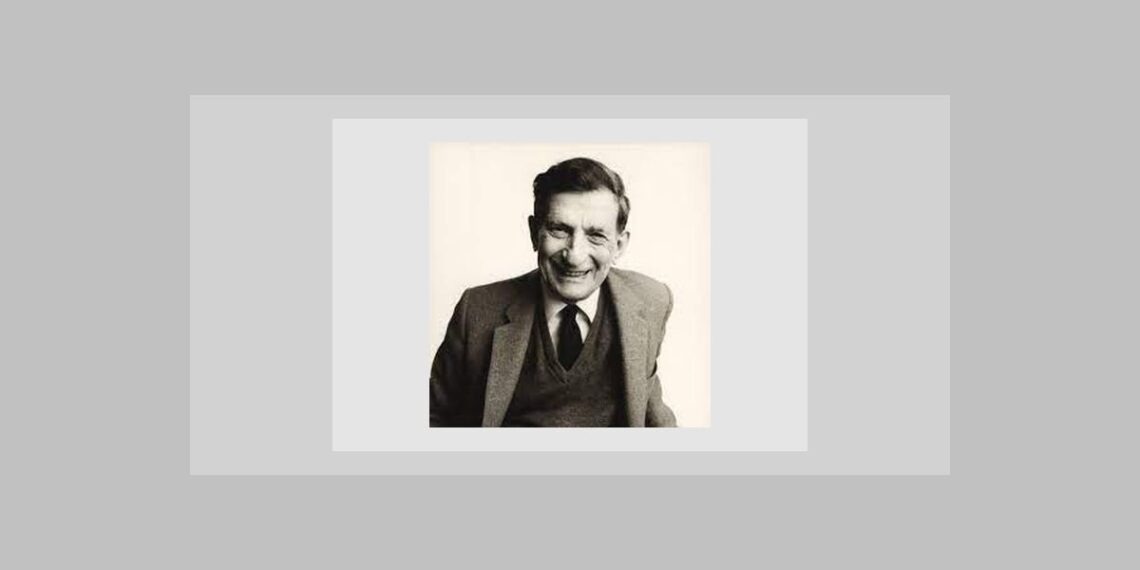In my recent (Nov. 2022) article for Hpathy I discussed the relevance of the work of Rupert Sheldrake to homeopathy. I explored the idea of morphic resonance, Sheldrakes’ theory of forms, which essentially postulates that form or patterning is a primary or irreducible aspect of being, and that once a form appears, it is more likely to appear again.
It was noted that Sheldrake preferred to speak of “habits” of nature, rather than “laws” of nature.
I presented a case in which initial conversations were more symptom-focused, and remedies gave temporary but not lasting relief. As the case progressed, the deeper formative pattern of her experience became more explicit, more apparent, and I was able to identify a particular bird energy, the black-capped chickadee, which supported her transformation or unfolding self-awareness as a healer in her own right.
We concluded that a remedy is a portal to a field of information which has the ability to give shape to the psyche and soma of an individual. I proposed the word “Logotron” as a descriptive term for the nature of a remedy. A logotron is a foundational pattern for an experience embodied by a non-human way of being that may also provide a healing resonance with dis-eased individuals.
These forays into the nature of remedies, of what exactly do they consist of, brings us to deeper questions. What is the nature of reality? What is the model of reality that homeopathy is based upon? And reciprocally, how does our homeopathic practice shed light or confusion upon this model?
To turn to these questions, it’s necessary to transition from the work of evolutionary biologist Rupert Sheldrake to the realm of physics. Today we’re going to dive into the thinking of one of the greatest physicists of the last century, David Bohm.
Bohm was born in Pennsylvania in 1917. His contributions to theoretical physics led him to work with Robert Oppenheimer on the Manhattan Project, which led to the development of the atom bomb. After the war he worked closely with Albert Einstein at Princeton University. However, his sympathies and affiliation with labor organizations in the 1950s caused him to be persecuted by McCarthy.
He was arrested for refusing to answer questions, and eventually he had to leave the country for Brazil. He subsequently lived and worked in Israel, and then England. In later life his work branched out from physics to theory of mind, of consciousness, and to how to create coherence and harmony in a world increasingly fragmented and divided, and beset by increasingly grave environmental and political problems. His work is characterized by a relentless probing into the origins of the mind’s tendency to fragment and polarize, to separate and divide where an undivided wholeness exists.
David Bohm died in 1992. As far as I know, he had no knowledge or experience of homeopathy. Yet his recognition that using force, violence, or the power of persuasion to change people’s minds leads not to healing or harmony but rather to further dis-ease among people, makes him a homeopath for our collective incoherence at his heart.
Through collaboration with Krishnamurti he developed a method of dialogue (called “Bohmian Dialogue”) which aims to lay bare assumptions behind opinions which could be compared, in a certain way, to the process of homeopathic case-witnessing.
What is reality?
For David Bohm, reality is Undivided wholeness in Flowing Movement. This view implies that flow is, in some sense, prior to that of the ‘things’ that can be seen to form and dissolve in this flow. One can perhaps illustrate what is meant here by considering the ‘stream of consciousness’.
A universal flux that cannot be defined explicitly but which can be known only implicitly, as indicated by the explicitly definable forms and shapes, some stable and some unstable, that can be abstracted from the universal flux. In this flow, mind and matter are not separate substances. Rather, they are different aspects of one whole and unbroken movement.
The best image of process is perhaps that of the flowing stream, whose substance is never the same. On this stream, one may see an ever-changing pattern of vortices, ripples, waves, etc. which evidently have no independent existence as such.
Rather, they are abstracted from the flowing movement, arising and vanishing in the total process of the flow. Such transitory subsistence as may be possessed by these abstracted forms implies only a relative independence or autonomy of behavior, rather than absolutely independent existence as ultimate substances.*
As you know, since the advent of quantum mechanics there has been a gap between Einstein’s General Theory of Relativity, which gives us a model of the universe at a macro level, and Quantum Mechanics, which gives us not a model but a series of equations which reliably predicts events at an atomic and subatomic level. This gap has precluded the formation of a theory of everything. Regarding this impasse, Bohm says:
“In relativity movement is continuous, causally determined and well-defined, while in quantum mechanics it is discontinuous, not causally determinate and not well defined. Each theory is committed to its own notions of essentially static and fragmentary modes of existence (relativity to that of separate events, connectable by signals, and quantum mechanics to a well-defined quantum state).
One thus sees that a new kind of theory is needed which drops these basic commitments and at most recovers some essential features of the older theories as abstract forms derived from a deeper reality in which what prevails is unbroken wholeness.”
Bohm calls this deeper reality the “Implicate Order”.
“In the enfolded order, space and time are no longer the dominant factors determining the relationships of dependence or independence of different elements. Rather an entirely different sort of basic connection of elements is possible, from which our ordinary notions of space and time, along with those of separately existent material particles, are abstracted as forms derived from the deeper order. These ordinary notions in fact appear in what is called the explicate or unfolded order, which is a special and distinguished form contained within the general totality of all the implicate orders.”
Bohm highlights the central role of consciousness in determining what ultimately is real:
“The enfolded order is a vast range of potentiality, which can be unfolded. The way it is unfolded depends on many factors. The way we think and so on is among those factors. The implicate order implies mutual participation of everything with everything. No thing is complete in itself, and its full being is realised only in that participation. The implicate order provides an image of how this might take place in physics in various ways. In participation, we bring out potentials which are incomplete in themselves, but it is only in the whole that the thing is complete. This makes it clear that we are not acting mechanistically, in the sense that we would be pushed and pulled by objects in the surroundings, but rather we act according to our consciousness of them so if you are not conscious of them you cannot act intelligently toward them. Consciousness, therefore, is really our most immediate experience of this implicate order.
The Problem of Fragmentation
As stated earlier, our habit of perceiving disconnection, separation, and fragmentation is for Bohm perhaps the most significant underlying cause of humanity’s distressed relationship to itself and the planet. And that perceptual error is intrinsically tied to our habits of thought.
“We are blinkered by the notion that theories give true knowledge about ‘reality as it is’…..confuse the forms and shapes induced in our perceptions by theoretical insight with a reality independent of our thought and our way of looking. This confusion is of crucial significance, since it leads us to approach nature, society, and the individual in terms of more or less fixed and limited forms of thought, and thus, apparently to keep on confirming the limitations of these forms of thought in experience.
It is crucial that man be aware of the activity of his thought as such; i.e. as a form of insight, a way of looking, rather than as a ‘true copy of reality as it is’.
The problem of fragmentation of human consciousness…due to a kind of thought that treats things as inherently divided, disconnected, and ‘broken up’ into yet smaller constituent parts. Each part is considered to be essentially independent and self-existent.
The act of reason is essentially a kind of perception through the mind, similar in certain ways to artistic perception, and not merely the associative repetition of the reasons that are already known. Thus, one may be puzzled by a wide range of factors, things that do not fit together, until suddenly there is a flash of understanding, and therefore one sees how all these factors are related as aspects of one totality…”
Can we recognize in this statement something parallel to the grasping of a case? How many of us have worked on cases initially by kind of adding up symptoms into a “totality”, leading to very underwhelming response…and then later having that “flash of understanding”, that insight into how all these “separate” factors or symptoms are related as aspects of one totality?
Bohm understood that if reality itself is wholeness in flowing movement, the mind and the body cannot be regarded as independent phenomena. He wrote:
“It is instructive to consider that the word ‘health’ in English is based on an Anglo-Saxon word ‘hale’ meaning ‘whole’: that is, to be healthy is to be whole, which is, I think, roughly the equivalent of the Hebrew ‘shalem’. Likewise, the English ‘holy’ is based on the same root as ‘whole’. All this indicates that man has sensed always that wholeness or integrity is an absolute necessity to make life worth living. Yet, over the ages, he has generally lived in fragmentation.”
The Need for Flow in Homeopathic Thought and Theory
Since the founding of our profession by Hahnemann, we have been subjected by rigid adherence to doctrines and fragmentation. There is no need here to review the divisive and polemical fractures within homeopathy itself between low and high potency prescribers, between classical and clinical adherents, between strictly “classical” adherents who uphold the repertory as the single most important tool, and the “neo-classical” upstarts who embrace Sensation method, Scholten, Yakir, and other theorists. What does Bohm have to say about theory and fragmentation itself?
“If we are not aware that our theories are ever-changing forms of insight, giving shape and form to experience in general, our vision will be limited. One could put it like this: Experience with nature is very much like experience with human beings. If one approaches another man with a fixed ‘theory’ about him as an ‘enemy’ against whom one must defend oneself, he will respond similarly, and thus one’s ‘theory’ will apparently be confirmed by experience. Similarly, nature will respond in accordance with the theory with which it is approached.”
Conclusion: Implications of Bohm’s Work for Homeopathy
- Bohm’s conceptualization of reality as undivided wholeness in flowing movement is consistent with our experience of witnessing the healing of patients with homeopathic remedies. When we witness or take a patient’s case, and successfully choose a resonant remedy, it is because we have correctly perceived the shape of their undivided wholeness, which in turn allows the patient’s energy to flow with coherence and harmony.
- That shape, the remedy or logotron which carries the pattern and message which resonates with the patient’s experience, has its source ultimately in an implicate order beyond space and time, but which becomes unfolded in explicate order and expression through the consciousness and experience of the patient returning to coherence and health.
- Consciousness, thought itself, is caught in a certain disorder, confusion. Self-deception is one of the major components of human thought. Since the practice of homeopathy involves the art of restoring coherence to the consciousness of our patients, it is incumbent upon ourselves as practitioners to seek to minimize our own disorder and confusion, lest we only add to the incoherence of our patients. The interaction of patient and homeopath is an aspect of Undivided Wholeness which cannot be divorced from the healing path of the patient.
- Homeopathic aggravations can be conceptualized as reactions of the patient’s consciousness to the limitations of the theory implied by the remedy. His or her wholeness is always more than what any single remedy or morphic field can encompass.
- Since knowledge is one aspect of universal flow and flux, homeopaths must not hold on too tightly to pet theories and methods. As Bohm says: “If all is flux, then every part of knowledge must have its being as an abstracted form in the process of becoming, so that there can be no absolutely invariant elements of knowledge.”
- Finally, the grasping of a patient’s case comes from a place beyond simple thought and intelligence, but rather from a singular flash of insight into the depth of wholeness of the patient. Thus, homeopathy is not just science, but rather an applied art. As Bohm writes: “Comprehension of the totality is not a reflective correspondence between ‘thought’ and ‘reality’ as a whole’. Rather, it is to be considered as an art form, like poetry, which may dispose us toward order and harmony in the overall ‘dance of the mind’.”
All quotations are from David Bohm’s Wholeness and the Implicate Order. First published in 1980 by Routledge and Kegan Paul. London.






This is a really interesting article. And it’s so true that when Person A expects Person B to be “the enemy,” that’s usually what he/she turns out to be. Person A has created his own reality. I’ve, unfortunately, met many people like that in my lifetime. You’d think humankind would have figured this out by now. Thank you for writing and sharing this article.
A lovely series of artiles Doug!
What a wonderful way to view homoeopathy.
Inspirational, thank you, and timely. The sentence “Yet his recognition that using force, violence, or the power of persuasion to change people’s minds leads not to healing or harmony but rather to further dis-ease among people, makes him a homeopath for our collective incoherence at his heart.” has me now reading his book. Written in 1980 (when I was reading Fritjof Capra’s ‘The Turning Point’ and beginning my homeopathic studies in London… ) and somehow overshadowed by the myth of materialism. Perhaps now these ideas are re-surfacing when most needed.